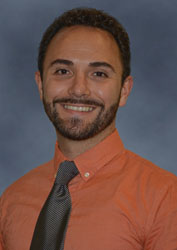Program Information
Altering Neonatal Radiographic Examination Protocols to Accommodate Different SID
D Vergara*, R Herrera , L Johnson , UAB Medical Center, Birmingham, AL
Presentations
WE-AB-601-3 (Wednesday, August 2, 2017) 7:30 AM - 9:30 AM Room: 601
Purpose: Previously, a process to design a standardized set of protocols for chest and abdomen neonatal radiographic examinations of different neonatal sizes was demonstrated. However, that process did not include the variability of the source-to-image distance (SID). The purpose of this study is to add a method to include SID effects in the standardized protocol design process.
Methods: Multiple neonatal phantoms composed of Lucite and varying in size were imaged using a Carestream DRX-Revolution portable radiographic unit at various X-ray potentials (kVp), integral tube currents (mAs), and SIDs. The SIDs investigated were those that would be likely constraints of common incubators, for example the GE Giraffe incubator, when open. The kVp and mAs values explored were those that seemed likely to bring the Carestream exposure indices (EI) for images acquired at smaller SIDs back into an acceptable range. A wireless digital radiographic plate was used to capture the radiographs and dosimetry parameters were collected from each image. The process was repeated using a 60 cc Radcal 9010 chamber placed on the phantoms in order to measure entrance skin exposure.
Results: Reducing mAs by half will yield images with acceptable EI values for all images acquired at SIDs of 70 – 80 cm, as would commonly be used for an open Giraffe incubator. Two-tailed t-tests comparing the standard deviations from images suggest that images collected near 70 cm SID and with half standardized protocol mAs have similar noise level to those acquired at 100 cm SID using the standardized neonatal protocols.
Conclusion: The relationship between SID and neonatal radiographic exam protocols was characterized. Based on their relationship, a process for altering standardized neonatal radiographic examination protocols to accommodate different SID values was obtained.
Contact Email:
